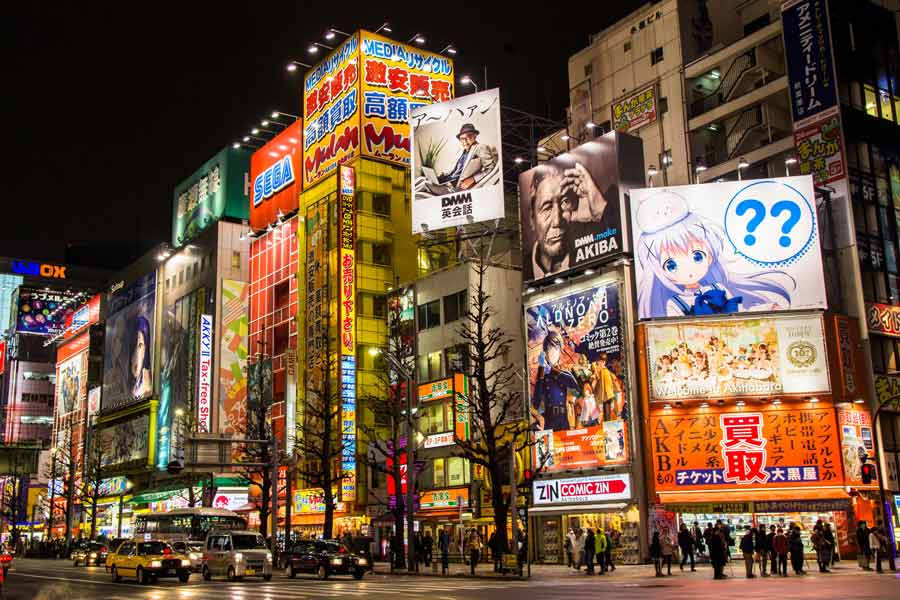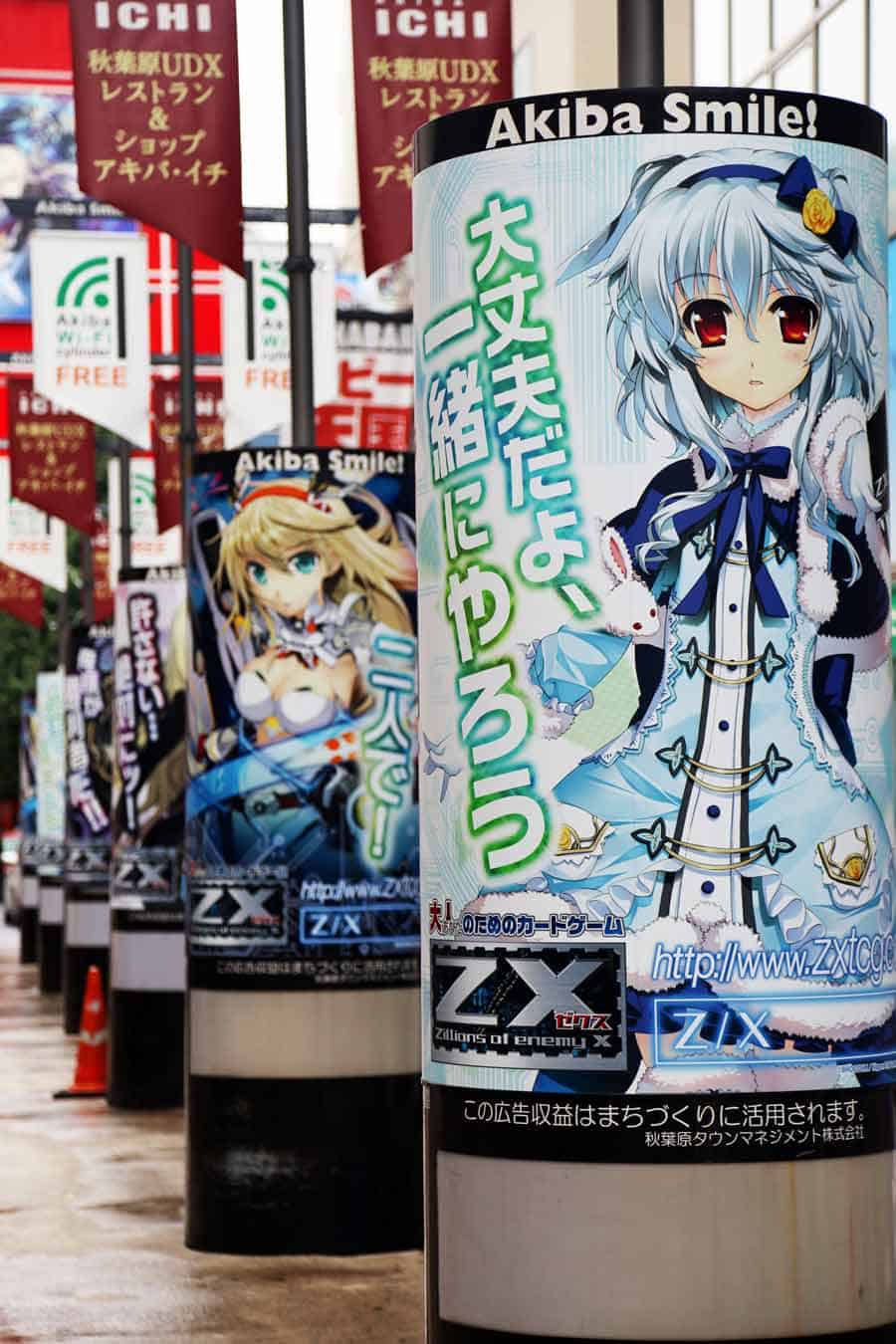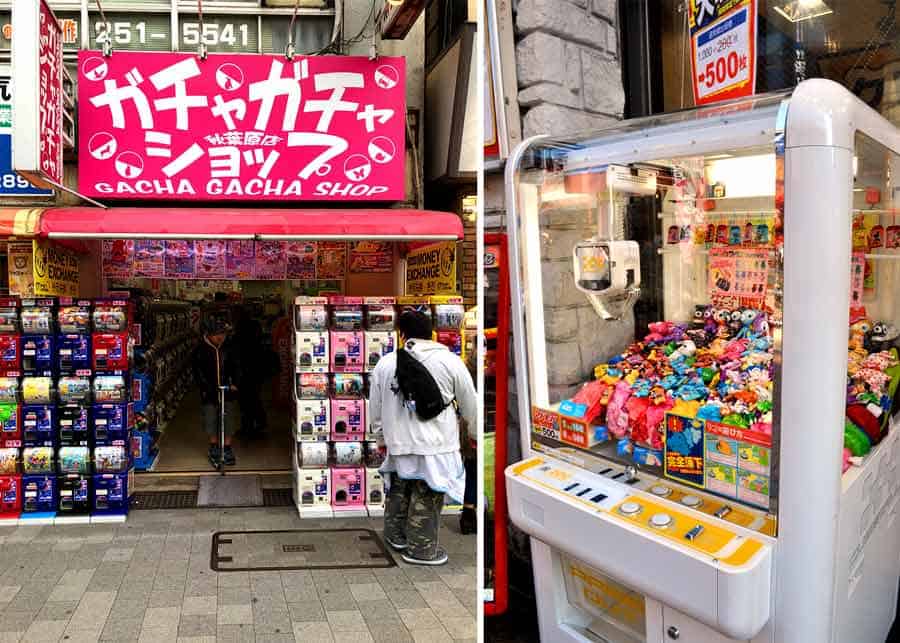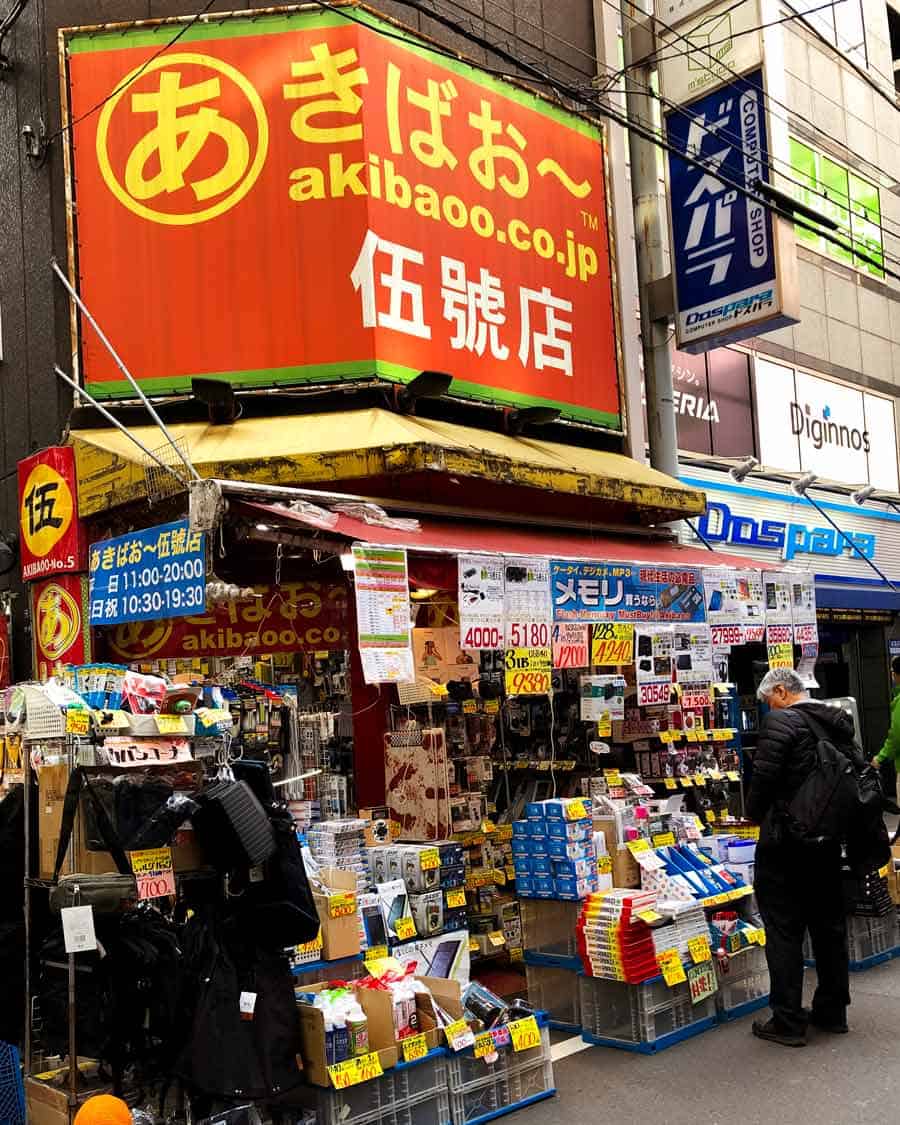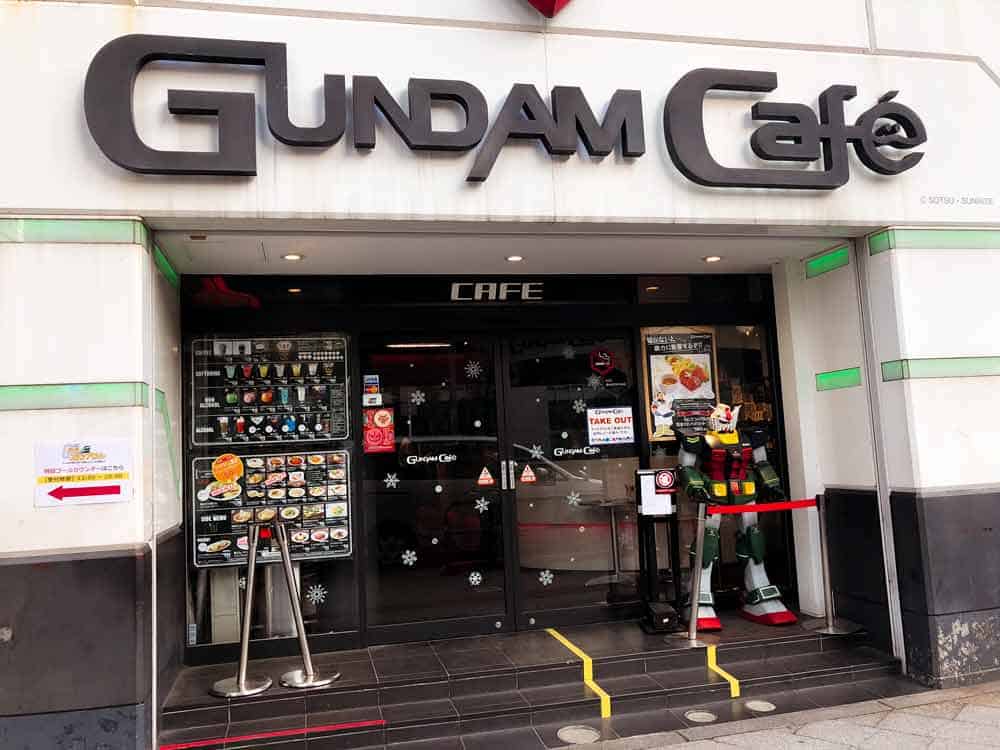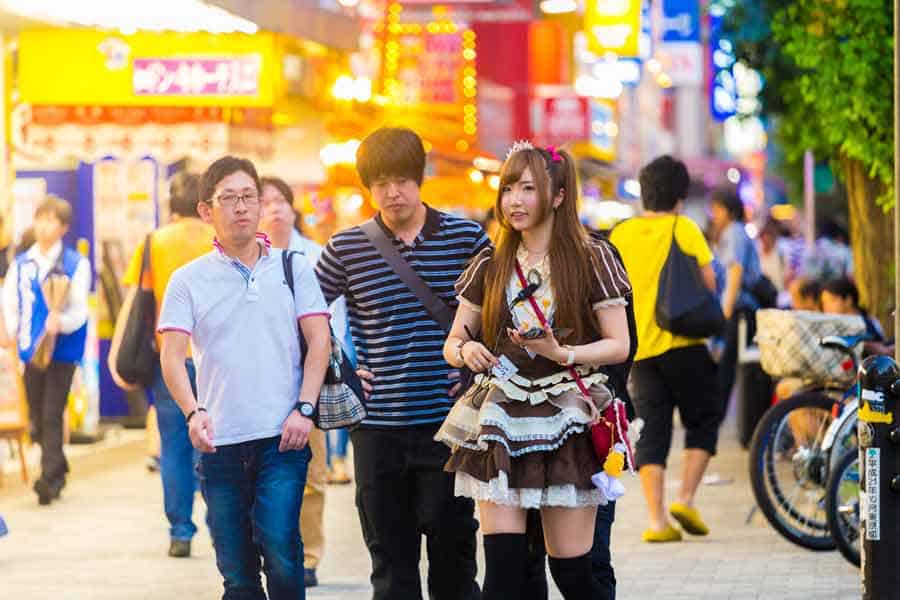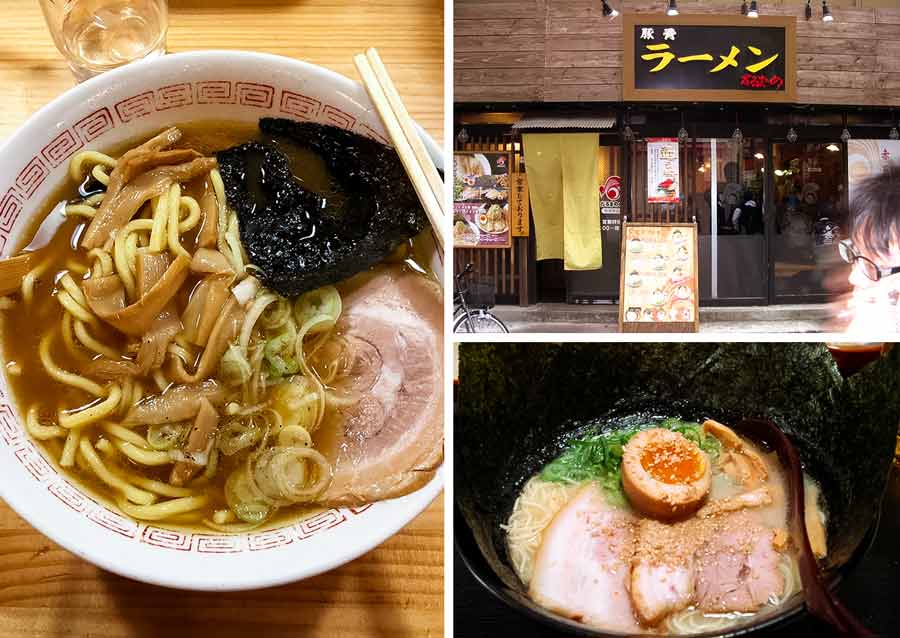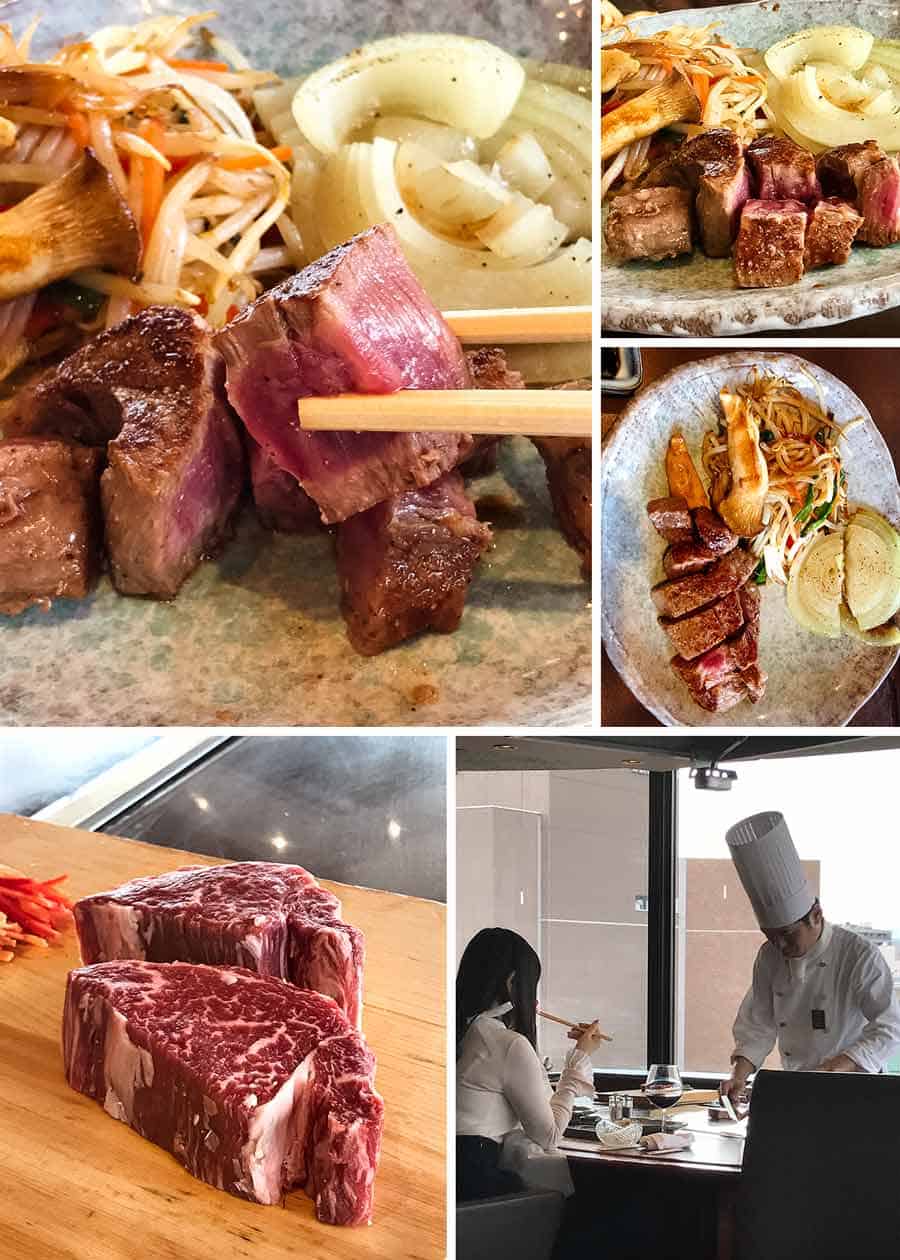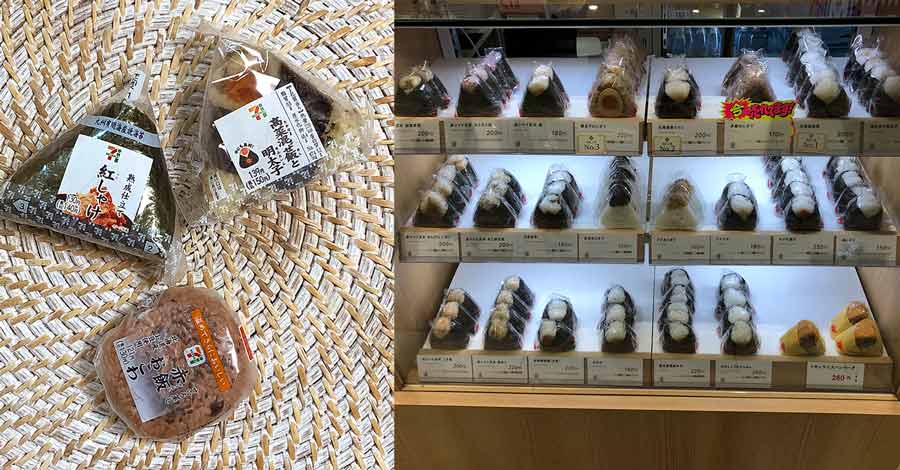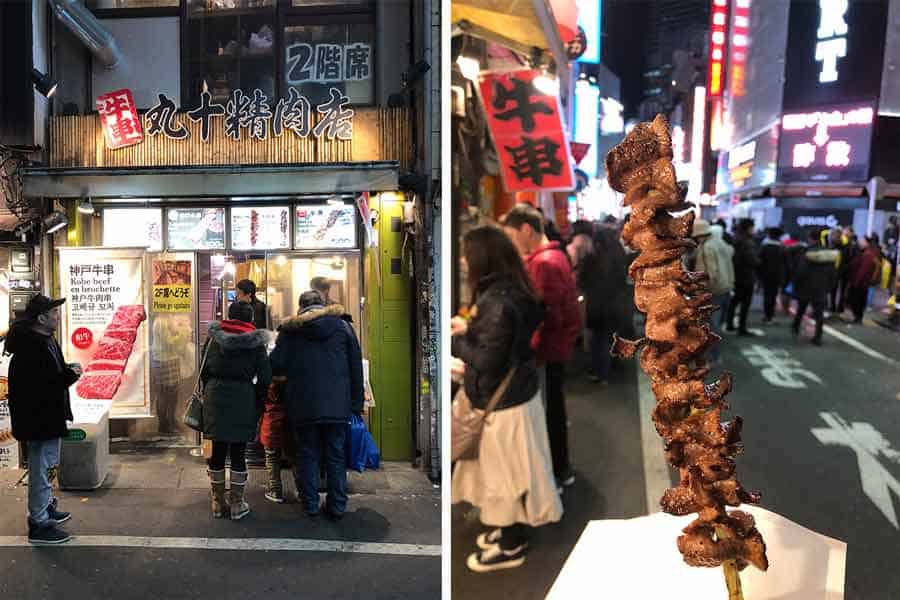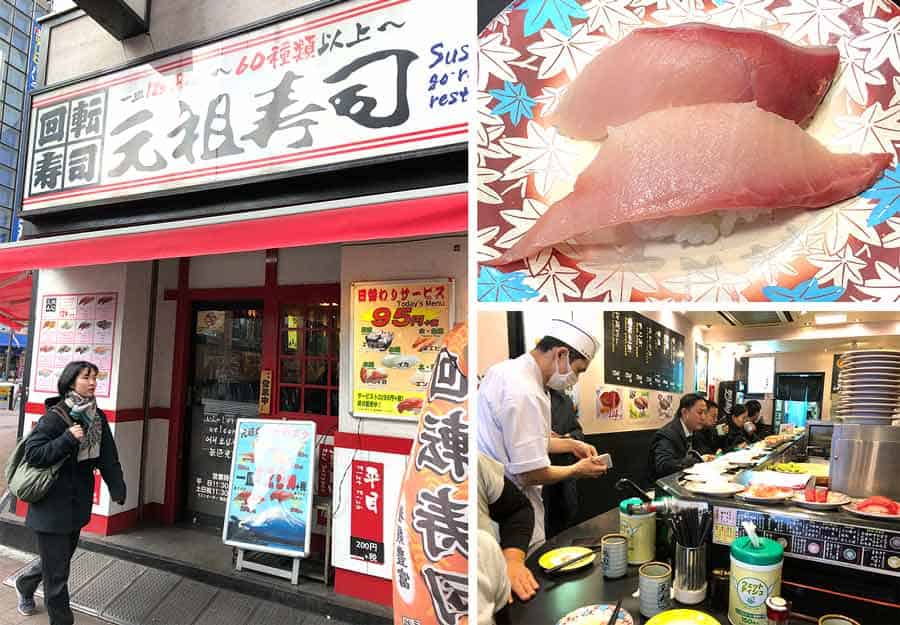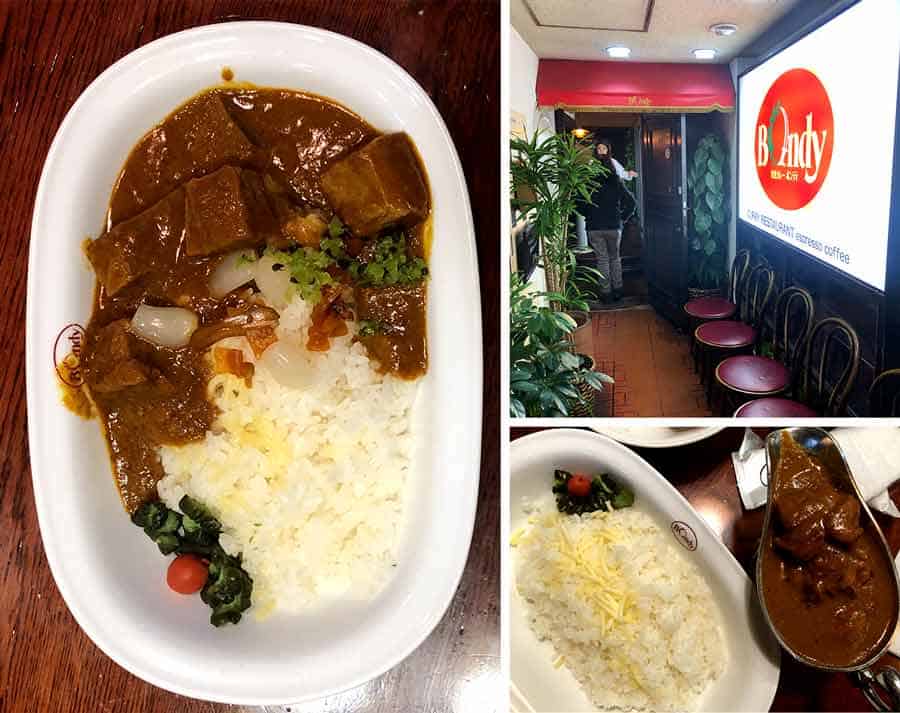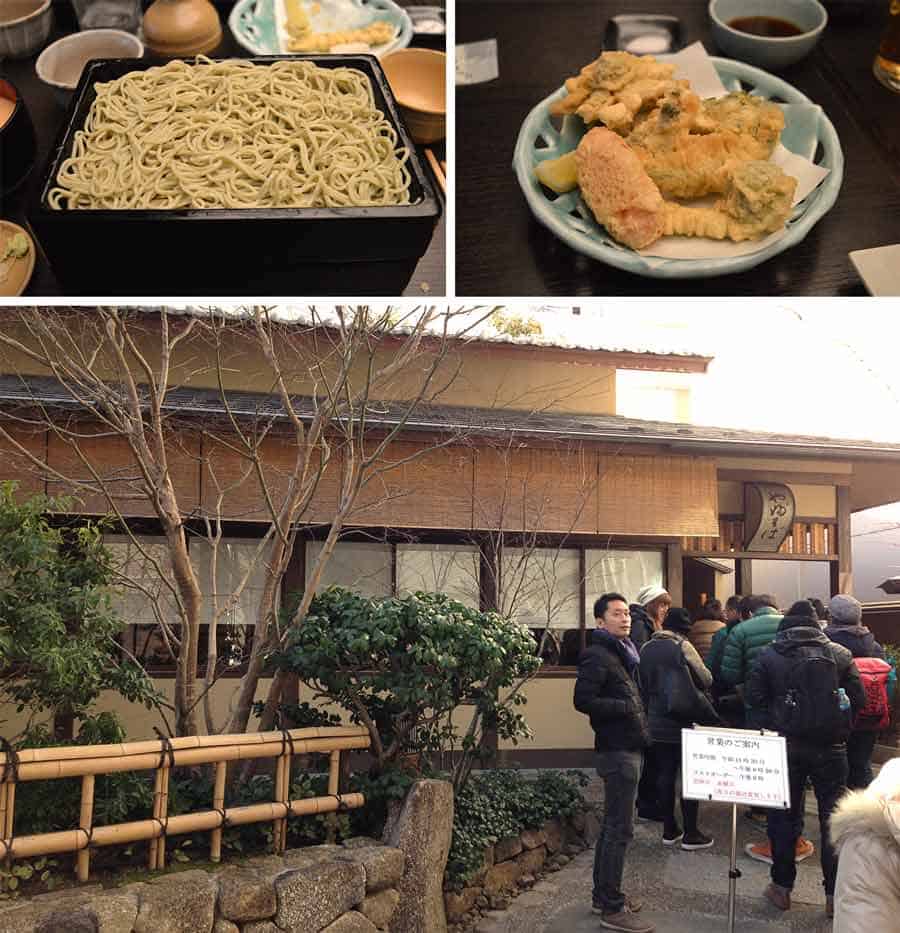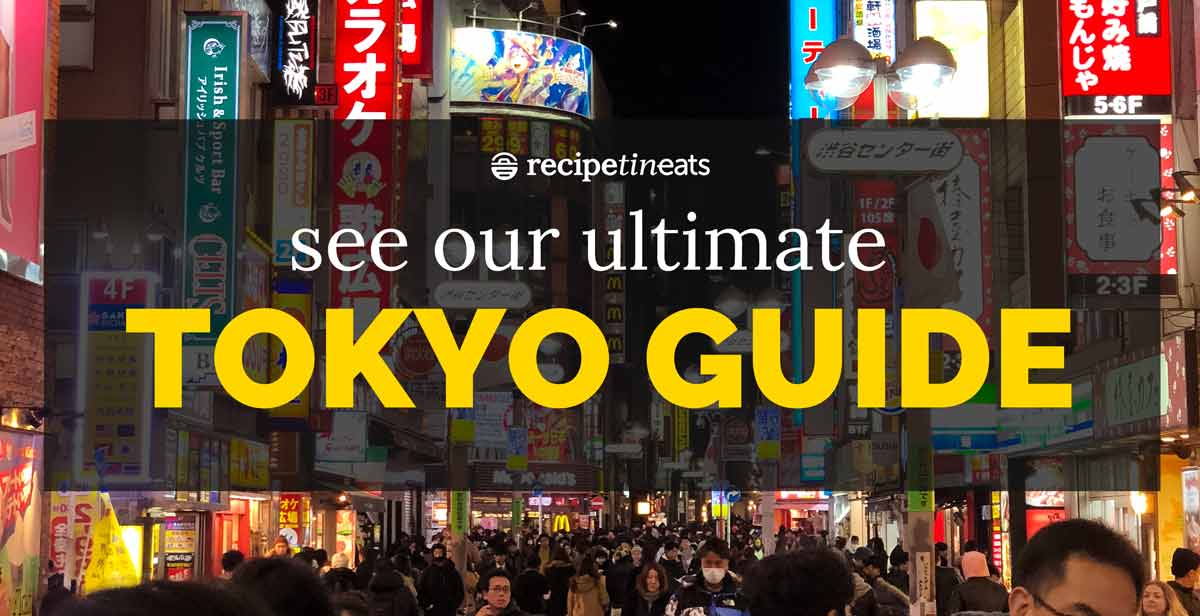No trip to Tokyo is complete without a visit to Akihabara “Electric Town”, known for its thousands of electronics stores selling every kind of gadget, device, appliance or machine part you could possibly imagine! Today the the area has also become equally famous as the home of all things anime and manga, while a market for gaming hobbies is also on the rise. Even if you’re not here to buy anything, Akihabara is absolutely worth checking out just to witness how deep Japan’s obsession with all things electronic and pop culture runs!
Akihabara
Sitting between Ueno to the north and the central part of Tokyo, the beginnings of the modern Akihabara started around the Second World War when the area was already known as a shady marketplace for traders of appliances, radios and electronic components. The area experienced a boom beginning with 80s as consumer electronics went mainstream worldwide. It’s around this time many of Japan’s most iconic personal technology inventions appeared – think Walkmans, Minidisc, CDs, Nintendo consoles, digital cameras. Much has changed since however, and Japan has somewhat lost its edge as a leading tech producer as foreign competition has encroached. Our excited trips to Akihabara in the 90’s to snap up the latest and greatest gadgets you couldn’t get back home in Australia are sadly no more. The boom in anime and manga in Akihabara is the other major shift in character that Akihabara has experienced. Otaku is the Japanese word often associated with Akihabara, and it means “geek”- especially one obsessed with all things anime and manga.
With its innumerable shops catering to every aspect of Japanese cartoon fantasy culture you could imagine, Akihabara today is as much a paradise for otaku as it is for electronics shoppers. The main strip is Chuo Dori, on the West side of the station, and the blocks that surround it. The East side has the gigantic Yodobashi Camera store near the station, but beyond this is mostly office blocks.
What to do in Akihabara
Shop for electronics, of course!
Japan is no longer as cutting edge when it comes to consumer tech, so it’s unlikely you’ll find many personal gadgets you cannot buy at home. That said, Akihabara is only place you can at least buy every possible electronic thing you could ever want all in one place! The two most popular electronics mega-stores are Yodobashi Camera and LAOX. These multi-level behemoths have English-speaking staff available and also offer duty free services. Be aware of voltage differences especially when purchasing appliances – the last thing you want is to require a step-down transformer brick to run that $800 Tiger rice cooker you’ve lovingly carried all the way home. Stores will sometimes carry a range of models designed for use in foreign countries. If you’re on a tight budget, often the smaller shops in the back streets offer better deals on particular things over the large retails. You can also find many of the more obscure and odd shops in these back lanes, like a guy who perhaps specialises in selling one specific component, and the back areas are worth a stroll for this alone.
Overload on all things manga and anime
Your eyes will no doubt have the doe-eyed look of a manga character yourself by the time you’ve had your fill of Japanese cartoon culture in Akihabara. Entire buildings are devoted to otaku obsessions, with floors of manga libraries, DVDs, figurines, collector cards, games and so on. Some characters you’ll recognise but many are unknown outside Japan, such is the vastness of the manga universe within Japan.
Visit a themed cafe
If you haven’t had enough yet and want the full manga experience, visit a themed cafe. Akihabara’s Gundam Cafe is the place to go for fans of the popular fighting robots anime series, with staff – and sometimes customers even – dressing up in Gundam-themed costumes. Maid cafes are the other popular draw in the area. Here it’s all about waitresses who dress up in kawaii (“cute”) maid costumes, serve you equally adorably-themed and decorated food with cheesy antics like dances and games to complete the package. (PS We don’t know those guys in the photo below…… 🤣)
Best food in Akihabara
Akihabara is not particularly known for its dining scene, but like anywhere in Japan there are plenty of quality restaurants to eat at and we’ve included a few of our favourites. Immediately south of Akihabara across the river is the Kanda residential area. This area is noted for being home to many old dining establishments specialising in traditional Japanese foods such as nabe (hot pot) and soba. Yabu Soba is one such venerated restaurant – see below! RAMEN We’ve been coming to Daruma no Me for years. It was a random find many years ago, and we keep coming back for nostalgia’s sake and just because it’s a tasty old fling! The most popular ramen is their tonkotsu ramen, which comes accompaned by a small bowl of sesame seeds which you grind yourself and add – a nice touch. They also offer something called abura-soba (literally, “oil soba”) which is a soup-less style of ramen eaten with sauce. We’ve never tried this, but will next time we’re here! There are English menus to help you navigate the ticket machine. Here’s a useful in-depth review of the restaurant from a guy who seems to have tried just about everything on the menu! Daruma no Me Address: 1 Chome-9-8 Sotokanda, Chiyoda-ku, Tokyo (MAP). Also at: Ikebukuro, Shinjuku, etc. Phone: +81 3 3253 2070 (No Reservations) Open: Mon to Fri 11:00-23:00, Sat 10:00-23:00, Sun/PH 10:00-22:00 Website (Japanese only)|Tabelog page
WAGYU BEEF / TEPPANYAKI Niku no Mansei is serious about beef. They have an entire ten storey building dedicated to the craft of serving top quality cow cuts in one form or another. The lowest floors consist of a cafe and family restaurants that have a wide variety of dishes, not just beef. The higher floors serve yakiniku, sukiyaki, shabu-shabu, and teppanyaki on the top floor where we went. Here we had what is hands down the best beef we have probably ever eaten. The heavily marbled wagyu beef steak is carefully seared on the hotplate by a chef in front of you, sliced into cubes and served (not thrown – that’s a silly entertainment gimmick only seen outside Japan!) Chewing is optional. The beef literally melts in your mouth like butter as your eyes mist over and roll back in your head. This. Is. Heaven. Don’t miss: Wagyu beef, teppanyaki style Niku no Mansei Address: 12 Chome-21 Kanda Sudacho, Chiyoda-ku, Tokyo (MAP). Phone: +81 3 5294 1210 (10F enquiry & reservation), +81 50 5872 4125 (general reservations), +80 3 5294 1204 (general enquiry) Open (10F): Mon-Sat 11:30-23:00 (LO 22:00), Sun/PH 11:30-22:00 (LO 21:00) Website|Tabelog page
ONIGIRI It might sound hard to get excited about a simple ball of rice stuffed with a filling (and usually wrapped in nori seaweed). But onigiri are both a comfort and convenience food beloved by Japanese people. They are to the Japanese what sandwiches are to Westerners. Mothers will pack onigiri in their children’s lunchboxes, busy city workers will grab one on the go from convenience stores, and they make the perfect picnic or travel food. Onigiri shops will typically offer staple fillings like cooked salmon, salty pickled plum and cod roe, along with some more unique creations. Sandaime-tokubei has branches in Akihabara and two in Shibuya. English is given on the labels. Sandaime-tokubei Address: 1 Chome-21, Kanda Sakumacho, Chiyoda-ku, Tokyo (MAP). Also at: Shibuya. Phone: +81 3 3254 5620 Open: 10:00-21:00 daily Website (Japanese only)|Tabelog page
KUSHIYAKI Freshly barbecued skewers of beef and pork (kushiyaki) on the go are what you’ll find at Maruju Seiniku-ten, a small chain of modest shopfronts dotted around the Tokyo region dedicated to these snacks. Choose what you want from the display and it will be grilled fresh in front of you. We’re yet to try all their offerings but are hooked on the wagyu, and black pepper beef! Maruju Seiniku-ten Address: 4 Chome-3-3 Sotokanda, Chiyoda-ku, Tokyo (MAP). Also at: Asakusa, Shibuya. Phone: +81 3 5302 1029 Open: 10:00-21:00 daily Website (Japanese only)|Tabelog page
SUSHI Gansozushi is a dependable and highly affordable kaitenzushi (conveyor belt sushi) chain with a number of outlets across the city. Prices start at a mere 95 yen for daily plates on special and the range of fish on offer is superb. True, the fish slices are on the thin side, but then you are also paying super-competitive prices to match. Perfect for a cheap sushi lunch on the run. Gansozushi Address: 1 Chome-15-1 Sotokanda Chiyoda-ku Tokyo (MAP). Also at: Asakusa, Ikebukuro, Shinjuku, etc. Phone: +81 3 5294 2477 Open: Weekdays 11:30-23:00 (LO 22:45), Weekend/Public Holiday 11:30-22:00 (LO 21:45), closed on 1st Jan Website|Tabelog page
JAPANESE CURRY The Jimbocho area just south-west of Akihabara is home to several university campuses. No surprise then that the area is famous for its abundance of used bookstores. It’s also famous for its huge number of Japanese curry restaurants. Rumour has it Jimbocho and nearby areas together boast over a hundred curry shops. Bondy is one of the old-school curry restaurants in Jimbocho, and it still pulls a solid fan base. A line of waiting office workers and students was already snaking down the hallway and stairwell when we showed up for lunch. But it’s easy to see why: Bondy does delicious curries, as good as any we’ve tasted. We’re not quite sure what the deal is with the boiled potatoes and butter you get served on the side, but it just ups the comfort food-factor another notch. Bondy Address: 2F Kanda Kosho Center BLDG., 2 Chome-3 Kanda Jinbocho, Chiyoda-ku, Tokyo (MAP). Also at: Otemachi, Senzoku, Shibaura, etc. Phone: +81 3 3234 2080 (no reservations) Open: 11:00-22:30 daily Website (Japanese only)|Tabelog page
SOBA Established in 1880 (though rebuilt after a fire in 2013), Kanda Yabu Soba is one of the oldest soba restaurants in Tokyo and are famous for their hot and cold soba dishes. Our Tokyo uncle brought us here for our first taste of traditional cold soba and it still remains the best soba experiences we’ve ever had. Ten-seiro soba is one of their signature sets, where you receive a helping of cold soba noodles and a large tempura prawn patty on the side. The rich and crunchy tempura is the perfect counterpoint to the chilled noodles dipped in soba sauce. Reservations are possible – 8 seats are available every hour by calling in advance – but you’ll need a Japanese speaker to call. Otherwise, be prepared to queue. Kanda Yabu Soba Address: 2 Chome-10 Kanda Awajicho, Chiyoda-ku, Tokyo (MAP). Also at: Otemachi, Senzoku, Shibaura, etc. Phone: +81 3 3251 0287 Open: 11:00-20:30 (LO 20:00), Closed on Wed. Website (Limited English)|Tabelog page
How to get to Akihabara
You can get to Akihabara station on three JR lines and a Metro Hibiya Line as follows.
JR Yamanote Line JR Keihin-Tohoku Line JR Sobu Line Tokyo Metro Hibiya Line
All of the JR lines share the same station, while the Hibiya Line Akihabara station is a separate station. Read the Tokyo Trains section in the Tokyo Travel Guide for information on travelling on trains, and how to figure out which trains to catch where!
Akihabara Area Map
How to use this map
By restaurant name – Click the icon on the top left to reveal our list of recommended restaurants in this area (see above for more information on each restaurant). Then click on the restaurant for more information about that restaurant as well as highlighting the marker on the map. Zoom in and out by clicking the + and – on the bottom left. Large view – Click the icon on the top right to open a new tab to view the map in full screen. Click a marker on the map to reveal more information about the restaurant.
See our Tokyo Guide!
Born in Japan, raised in Australia, Sydney is our hometown, but Tokyo is our playground. This Tokyo Travel Guide is a culmination of a lifetime of travelling to Tokyo, condensed into one place!!
Asakusa / Shinjuku / Shibuya / Harajuku / Tokyo Station / Imperial Palace / Ginza / Ueno / Akihabara
